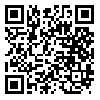Volume 13, Issue 1 (5-2014)
TB 2014, 13(1): 124-144 |
Back to browse issues page
Download citation:
BibTeX | RIS | EndNote | Medlars | ProCite | Reference Manager | RefWorks
Send citation to:



BibTeX | RIS | EndNote | Medlars | ProCite | Reference Manager | RefWorks
Send citation to:
Jafari Mansoorian H, Mahvi A, Bazrafshan E, Jonidi Jafari A. Efficiency of the Electrocoagulation Process with Alternating and Direct Current for Eliminating Lead from Battery Industry Wastewater by Using Metal Iron and Stainless Steel Electrodes. TB 2014; 13 (1) :124-144
URL: http://tbj.ssu.ac.ir/article-1-1600-en.html
URL: http://tbj.ssu.ac.ir/article-1-1600-en.html
Zahedan University of Medical Sciences , h.mansoorian@yahoo.com
Abstract: (4206 Views)
Introduction:Lead and zinc are among the most poisonous unnecessary heavy metals available in the environment and are among the first grade poisonous pollutants. In this study the efficiency of electrocoagulation process using alternating and direct current and iron and stainless steel rods for elimination of lead and zinc from battery industrial wastewater has been investigated.
Methods:Wastewater samples were taken from the battery building industry. In the electrochemical cell, metal iron and stainless steel rod electrodes were used and were connected together serially and unipolarly to the feeding source.
Results:By using alternating current, the elimination of lead and zinc was done successfully with iron electrodes and in the density of 6 mA/cm2 which were 96.7% and 95.2% and with stainless steel electrodes in density of 8 mA/cm2 which were 93.8% and 93.3% respectively. By using direct current, the optimum elimination of lead and zinc with iron electrodes leveled at 97.2% and 95.5% and in density of 6mA/cm2 and with stainless steel electrodes was equal to 93.2% and 92.5% in density of 8mA/cm2 respectively.
Conclusion:The results from this research are in line with the results from other studies. According to the results, this process can be applied as a suitable method for a wide use of electrolyte reactors in industrial scale and for eliminating lead and zinc from aqueous environments.
Keywords: Lead removal, Eectrocoagulation, Direct Current, Alternating Current, Leads and Zinc, Battery Wastewater, Iron and Stainless Steel Electrode
Type of Study: Research |
Subject:
Special
Received: 2013/04/16 | Accepted: 2013/07/3 | Published: 2014/05/20
Received: 2013/04/16 | Accepted: 2013/07/3 | Published: 2014/05/20
Send email to the article author
| Rights and permissions | |
 |
This work is licensed under a Creative Commons Attribution-NonCommercial 4.0 International License. |





